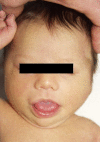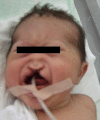Prediction, prevention and personalisation of medication for the prenatal period: genetic prenatal tests for both rare and common diseases
- PMID: 23199148
- PMCID: PMC3405382
- DOI: 10.1007/s13167-011-0080-3
Prediction, prevention and personalisation of medication for the prenatal period: genetic prenatal tests for both rare and common diseases
Abstract
Genetic testing usually helps physicians to determine possible genetic diseases in unborn babies, genetic disorders of patients and the carriers who might pass the mutant gene on to their children. They are performed on blood, tissues or other body fluids. In recent years, the screening tests and diagnostic tests have improved quickly and, as a result, the risks of pregnancy can be determined more commonly and physicians can diagnose several genetic disorders in the prenatal period. Detecting the abnormalities in utero enables correct management of the pregnancy, prenatal and postnatal medical care, and it is also important for making well informed decisions about continuing or terminating a pregnancy. Besides the improvements of conventional invasive diagnostic tests, the discovery of circulating cell-free foetal nucleic acids in maternal plasma has developed a new point of view for non-invasive prenatal diagnosis recently.
Figures
Similar articles
-
Prenatal Diagnosis Procedures and Techniques to Obtain a Diagnostic Fetal Specimen or Tissue: Maternal and Fetal Risks and Benefits.J Obstet Gynaecol Can. 2015 Jul;37(7):656-668. doi: 10.1016/S1701-2163(15)30205-X. J Obstet Gynaecol Can. 2015. PMID: 26366824 English, French.
-
Prenatal screening for fetal aneuploidy in singleton pregnancies.J Obstet Gynaecol Can. 2011 Jul;33(7):736-750. doi: 10.1016/S1701-2163(16)34961-1. J Obstet Gynaecol Can. 2011. PMID: 21749752
-
Carrier screening for thalassemia and hemoglobinopathies in Canada.J Obstet Gynaecol Can. 2008 Oct;30(10):950-959. doi: 10.1016/S1701-2163(16)32975-9. J Obstet Gynaecol Can. 2008. PMID: 19038079 Review. English, French.
-
Population-based trends in invasive prenatal diagnosis for ultrasound-based indications: two decades of change from 1994 to 2016.Ultrasound Obstet Gynecol. 2019 Apr;53(4):503-511. doi: 10.1002/uog.19107. Ultrasound Obstet Gynecol. 2019. PMID: 29877030
-
Recent advances in non-invasive prenatal DNA diagnosis through analysis of maternal blood.J Obstet Gynaecol Res. 2007 Dec;33(6):747-64. doi: 10.1111/j.1447-0756.2007.00652.x. J Obstet Gynaecol Res. 2007. PMID: 18001438 Review.
Cited by
-
Potential Increased Risk of Trisomy 18 Observed After a Fertilizer Warehouse Fire in Brazos County and TX.Int J Environ Res Public Health. 2020 Apr 8;17(7):2561. doi: 10.3390/ijerph17072561. Int J Environ Res Public Health. 2020. PMID: 32276490 Free PMC article.
-
Effects of Single-Nucleotide Polymorphisms in Cytokine, Toll-Like Receptor, and Progesterone Receptor Genes on Risk of Miscarriage.Obstet Gynecol Int. 2018 Jul 17;2018:9272749. doi: 10.1155/2018/9272749. eCollection 2018. Obstet Gynecol Int. 2018. PMID: 30116270 Free PMC article.
References
-
- Moore KL, Persaud TV. The developing human: clinically oriented embryology. Philadelphia: Saunders; 2002. p. 168.
-
- Jones KL. Smith’s Recognizable patterns of human malformation. Philadelphia: Saunders; 1997. p. 3.
-
- Stembalska A, Ryszard OE, Karolina P, Justyna G, Sasiadek MM. Prenatal diagnosis—principles of diagnostic procedures and genetic counseling. Folia Histochem Cytobiol. 2007;45(Supp. 1):11–6. - PubMed
LinkOut - more resources
Full Text Sources






